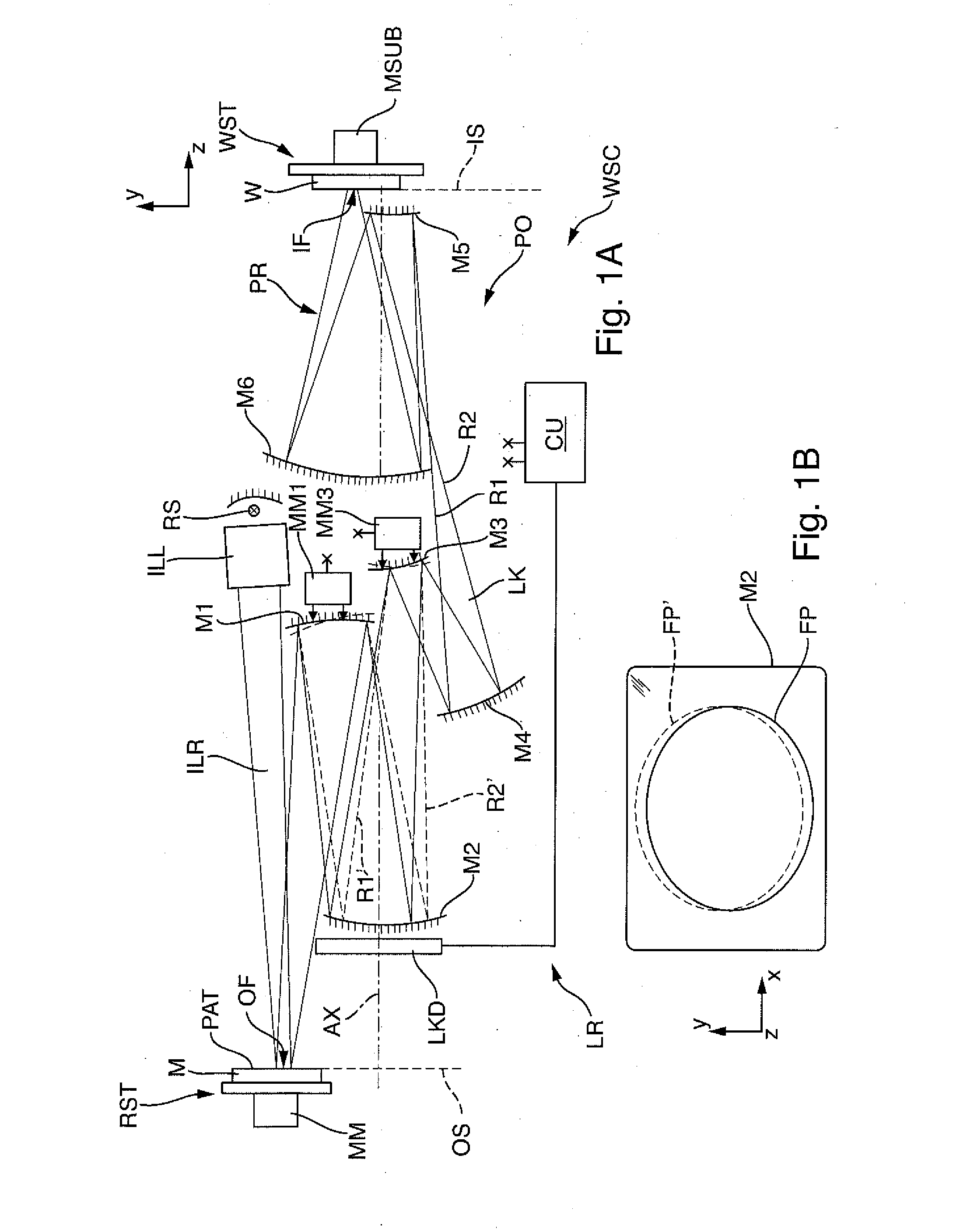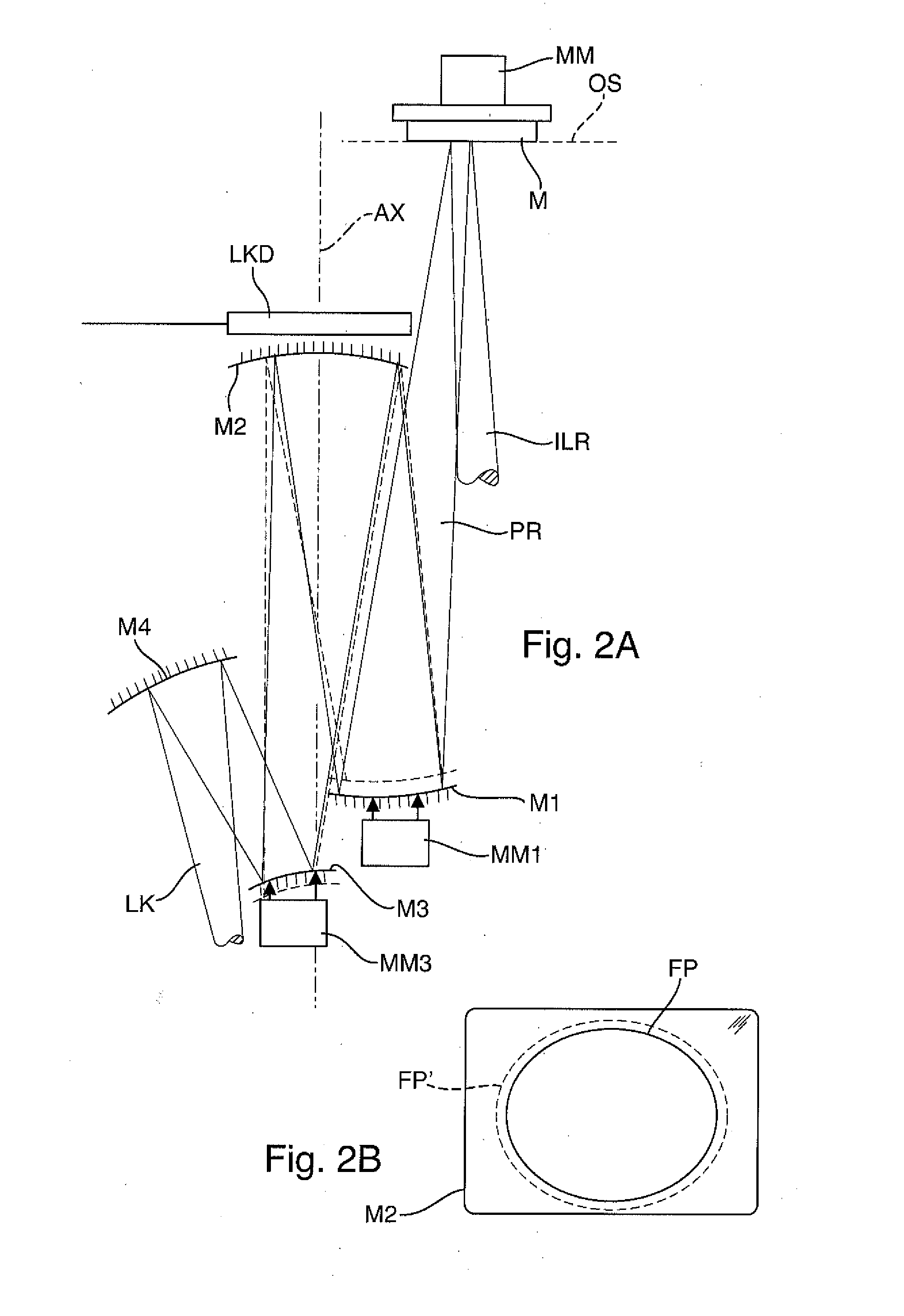Projection exposure method and projection exposure apparatus for microlithography
a technology of projection exposure and microlithography, which is applied in the direction of microlithography exposure apparatus, printers, instruments, etc., can solve the problems of affecting the imaging performance, and affecting the image quality
- Summary
- Abstract
- Description
- Claims
- Application Information
AI Technical Summary
Benefits of technology
Problems solved by technology
Method used
Image
Examples
Embodiment Construction
[0061]FIG. 1A schematically shows components of an EUV microlithography projection exposure apparatus WSC for exposing a radiation-sensitive substrate W arranged in the region of an image plane IS of a projection lens PO with at least one image of a pattern PAT of a reflective mask M, the pattern being arranged in the region of an object plane OS of the projection lens.
[0062]The projection exposure apparatus is operated with the radiation of a primary radiation source RS. An illumination system ILL serves for receiving the radiation of the primary radiation source and for shaping illumination radiation ILR directed onto the pattern. The projection lens PO serves for imaging the structure of the pattern onto the light-sensitive substrate W.
[0063]The primary radiation source RS can be, inter alia, a laser plasma source or a gas discharge source or a synchrotron-based radiation source. Such radiation sources generate a radiation in the extreme ultraviolet range (EUV range), in particul...
PUM
| Property | Measurement | Unit |
|---|---|---|
| operating wavelengths | aaaaa | aaaaa |
| operating wavelengths | aaaaa | aaaaa |
| wavelengths | aaaaa | aaaaa |
Abstract
Description
Claims
Application Information
 Login to View More
Login to View More - R&D
- Intellectual Property
- Life Sciences
- Materials
- Tech Scout
- Unparalleled Data Quality
- Higher Quality Content
- 60% Fewer Hallucinations
Browse by: Latest US Patents, China's latest patents, Technical Efficacy Thesaurus, Application Domain, Technology Topic, Popular Technical Reports.
© 2025 PatSnap. All rights reserved.Legal|Privacy policy|Modern Slavery Act Transparency Statement|Sitemap|About US| Contact US: help@patsnap.com



